by bria4123 on May 24, 2012
One afternoon in Chennai, a man named Subramaniam invited me and four other classmates to his mom’s apartment for lunch. Two were young southern Indian men, and the others were young women–one Swiss and the other Belgian.
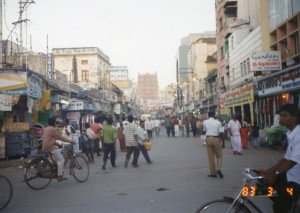
We sat in a circle in the front room and chatted for a while. But Subramaniam had something up his sleeve that I didn’t expect. [click to continue…]
by bria4123 on May 22, 2012
For a humongous city bisected by a river, Bangkok has few bridges. I had to take a boat to cross the river from the area around the royal palace to Wat Arun.
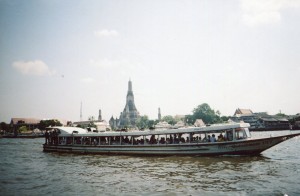
But in the water, I found myself in Thailand’s spiritual heart. [click to continue…]
by bria4123 on May 22, 2012
I’ve been comparing Thai and Western art in the last few posts, and I wrote that Thais can find the the West’s emphasis on static geometric forms crude.
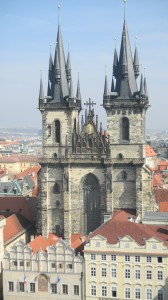
Through Thai eyes, that’s understandable. Thais have created a limitless variety of sinuous and rippling forms in their buildings, statues, panting and classical dances. But Westerners have used static forms in ways that are equally graceful. So we’ll look through Western lenses in this post, and enjoy some of Gothic style’s inner spirit. [click to continue…]
by bria4123 on May 20, 2012
The kingdom of Ayutthaya ruled southern and central Thailand from the 14th century to 1767, and it developed one of Thailand’s greatest architectural gems.
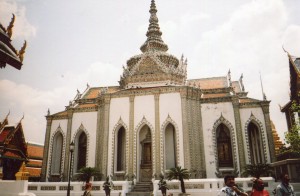
The pavilion in the above photo is from Bangkok’s royal palace, but it follows much of the Ayutthayan form. Most Thai pavilions won’t wow you with their sizes, but you have to appreciate them with Thai thought patterns. Thai’s usually don’t go for size. They do cooler things with art forms. [click to continue…]
by bria4123 on May 19, 2012
Wat Arun rises from the Chao Phraya River as a timeless symbol of Thai unity. But explore Wat Arun closely and you’ll find many more things to savor.
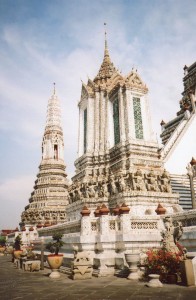
Wat Arun shines with symbolic meanings, and they’re expressed in ways that are uniquely Thai. The last post explored Wat Arun’s outer form. Now we’ll take a deeper look at its enchantments. [click to continue…]
by bria4123 on May 19, 2012
Bangkok’s Wat Arun was named after the Indian god of the dawn (Aruna) for good reasons. It symbolized the founding of the new Thai capital across the river from where Bangkok would grow after the Burmese had destroyed Ayutthaya (the old capital) in 1767.
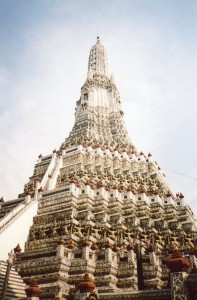
To signify the new beginning, Thais brought their traditional art forms to perfection, and they’re a fascinating comparison with Western art forms. [click to continue…]
by bria4123 on May 18, 2012
Thailand has beautified the human foot more than any other culture has–and Thai’s consider the foot so impure that you should never touch anyone with yours, or point it at a sacred image. But Thais have a genius for making even the most mundane things pretty.
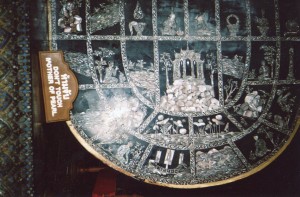
The above shot is of the heel of Wat Pho’s Sleeping Buddha. There’s a whole world in it to explore. [click to continue…]
by bria4123 on May 17, 2012
People admire Michelangelo’s David for its size and grace, but it’s got nothing on Wat Pho’s Sleeping Buddha statue.
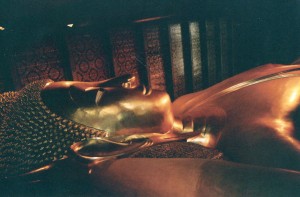
But the Wat Pho statue was made according to Thai thought patterns, rather than Western. [click to continue…]
by bria4123 on May 17, 2012
From the 11th to the 13th century the Khmers ruled about half of Thailand, but Thais became independent in the 13th century and they formed their own states. This is very cool because–
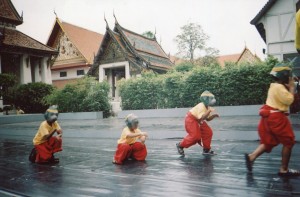
people in Pisa, Italy were building their greatest monuments at the same time. Thai culture and the Italian Renaissance developed at the same time, and both make up one of the most enjoyable cultural comparisons I’ve ever found. The last 3 posts focused on the Italian Renaissance’s role in strengthening Western culture. But on the other end of Eurasia, an equally fascinating culture flowered. [click to continue…]
by bria4123 on May 16, 2012
A lot of the folks who ogle over Pisa’s Leaning Tower miss the Campo Santo. Too bad for them–it’s one of the stateliest buildings I’ve ever seen.
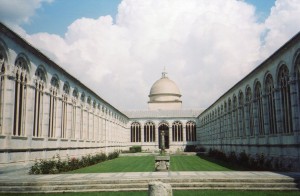
But wonderful for me because I practically had it to myself. Come in and explore it. [click to continue…]










